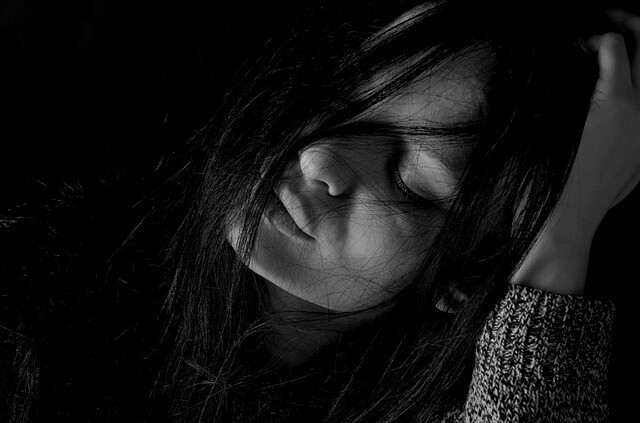The 6 differences between sadness and depression
They are two different concepts and at the same time with multiple points in common. Two ideas that are too often misunderstood and confused.
It's about the sadness and the depression, two terms that today we intend to clarify and differentiate once and for all. These differences are not only limited to the emotional expression of both sensations, but also It also has to do with the psychological and psychophysiological causes that give rise to each of they.
Sadness and depression: a harmful confusion
There is a terrible confusion between the two terms, sadness and depression. We are going to define both concepts and clarify recurring doubts about their similarities and differences.
The signs and symptoms that cause depression and sadness can be difficult to differentiate for a person with little knowledge of the subject. Fortunately, mental health professionals know that based on a good deal of research, scientific, there are certain signs and signals of different kinds that allow us to differentiate between these two state.
As a summary, we can explain up to six basic points to know when we are facing a sad person, or someone who suffers from a depressive disorder.
- To deepen: "Are there several types of depression?"
1. Depression is a psychological disorder
Depression is a psychopathology in which, for different causes and reasons, the affected person manifests certain symptoms: sadness, apathy, anguish, feelings of hopelessness... That is, sadness is only one of the facets of depression.
While sadness is a passing state of mind, people who suffer from a depressive picture are in a chronic situation of discomfort and uneasiness. To be diagnosed with depression, a person must be at least six months with this type of symptomatological pictures.

2. Sadness is a relatively temporary state of mind
The feeling of sadness is a relatively common psychological state, and that it is not by itself an indicator of any mental disorder. It is simply the psychological reaction to something that has hurt us or to difficult circumstances from which we find it difficult to escape. The appearance of sadness, crying and crying is something totally normal.
Sadness is one of the human emotions, and it is not bad nor should we worry excessively that someone is sad for a few days. We can be sad when we lose a family member or a close friend, we can feel sad when a plan is truncated and We can even feel this way for no apparent reason, perhaps because of a hormonal change or because we have woken up in a state of mind. under.
Therefore, one of the differences between sadness and depression is that the former is to be expected, while few people develop depression in their lifetime.
3. Neuroimaging tests
As we see in the image below these lines, people with depression have a level of activation in various areas of the brain clearly inferior to healthy people. Through different neuroimaging techniques we can observe that the depressive brain clearly differs from the healthy brain.
In addition, the levels of serotonin they are much lower in people with depressive symptoms, which influences a large number of mental processes. A sad person, on the other hand, does not experience such radical or lasting changes in their brain activation dynamics.
4. Abulia
Apathy is characterized by affecting people with depression, and leaving them totally (or partially) unable to cope with daily life. Going to work, shopping or doing a business becomes an impossible mission for patients with these types of pictures.
Somehow, people with depression feel that there is nothing worth moving about, and they act accordingly. They lack initiative for the basics, from combing their hair to going out.
Apathy and the different effects on the behavior of people with depression is not something they choose for themselves. The cause of these behavioral manifestations is found in the deterioration of the nervous and immune systems. Apathy can be common in both people who are sad and people with depression. The difference is that depressed people have this apathy for weeks and even months.
5. When sadness goes too far
Sometimes, prolonged sadness can lead to a case of depression. The progressive deterioration in the quality of life of the affected person can be noticed because he becomes unable to make his daily tasks, is frequently affected (crying, isolation) and is very limited by their state psychological.
If this situation lasts for several months, it is possible that the person is immersed in the development of a depressive picture. Thus, the difference between sadness and depression is partly quantitative. But there is also a qualitative difference: in depression many times the fact or memory that generates the discomfort cannot be identified. That is something that does not happen when we are sad; In those situations, we feel this way because of a fact that, more or less, we know.
6. Sadness doesn't need therapy; depression, yeah
As we have seen, a state of common sadness is temporary and does not have much importance. It is very likely that people who go through a period of emotional pain do not require any specific professional support. Simply, the return to the routine and the informal support of your friends, family and relatives can be more than enough for life to resume its course and they can overcome this state of sadness.
However, depression is a serious disorder that must be treated by a professional, because it affects the quality of the person's going very significantly. An accurate diagnosis and therapy focused on cognitive restructuring and, if necessary, on psychotropic drugs, can decisively help the patient to regain his psychological well-being and maintain it over time, avoiding relapses.
Another way of looking at it is to consider that sadness is actually a useful emotion. It serves to add emotional tone to certain memories and thus make wiser decisions in the future. The difference between depression and sadness would be, then, in that the second in an alteration of the normal functioning of the brain, something that is not useful but rather represents a barrier. That is why it is considered that the symptoms of depressive disorders should be mitigated, and is currently working to go to the root of the problem and eliminate the disorder itself, although at the moment it is not known how to do it and many years of research lie ahead.
Bibliographic references:
- Foti, D. et al (2014). Reward dysfunction in major depression: Multimodal neuroimaging evidence for refining the melancholic phenotype. NeuroImage, 101, pp. 50 - 58.
- Triglia, Adrián; Regader, Bertrand; García-Allen, Jonathan (2016). Psychologically speaking. Paidos.


